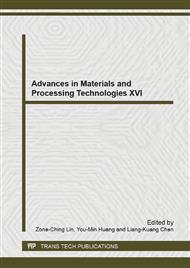p.563
p.570
p.577
p.584
p.592
p.600
p.609
p.615
p.623
The Effect of Seat Tube Angle (STA) on Muscle Tension Leg Riders
Abstract:
Bicycle becomes famous transportation as efforts cut greenhouse gas emission. Comfortable, less injured, and less energy are the requirement of bicycle that urban communities wanted. Seat tube angle (STA) is an angle formed between seat tube and chain stay, which has influences on the above requirement. The objective of this study is to investigate the effect of varying seat tube angle (STA) on the muscle tension leg riders during cycling. This study used changeable frame bicycle into several STA. A total five cycling trials with body mass index 21-25, were conducted at seventeen STA’s position (form 62° until 78°). Muscle tension leg was measured before and after cycling by using leg dynamometer. Oxygen consumption (VO2) and heart rate (HR) data were also collected during cycling at 6 minutes and will be converted to paddle energy. Through this study was found that muscle tension leg rider decreasing with the increasing STA. However, after STA of 66°, the muscle leg tension increasing respecively. The smallest muscle tension leg was 21,4 Kg at 66° STA. At the same position, pedal energy showed 7.148 Kcal which was the smallest result as well. From these study found, that 66° STA also had less muscle tension leg and paddle energy during cycling.
Info:
Periodical:
Pages:
592-599
Citation:
Online since:
May 2014
Authors:
Keywords:
Price:
Сopyright:
© 2014 Trans Tech Publications Ltd. All Rights Reserved
Share:
Citation:


